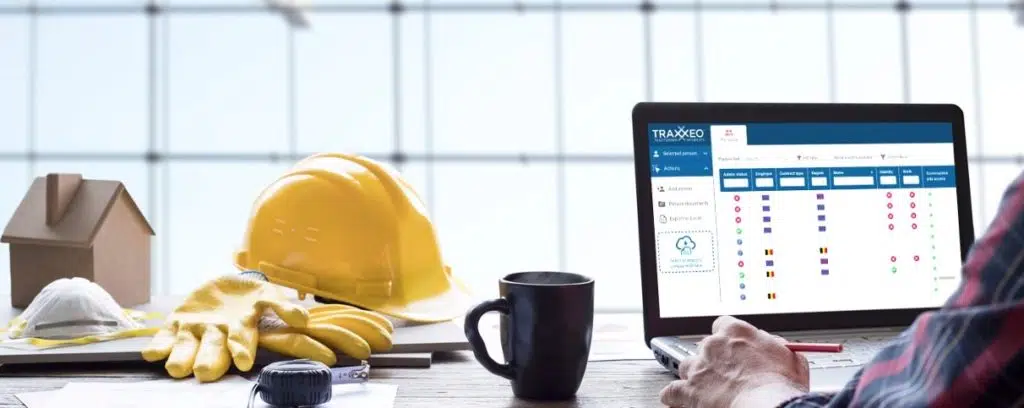Getting Seamless Task Delivery: Architect's Comprehensive Approach to Building And Construction Document Administration
In the realm of design and building and construction, the precise orchestration of project aspects is paramount to success. One vital element commonly undervalued is the management of building and construction records, which works as the backbone of every job. construction document management. As architects navigate the complexities of control, layout, and execution, a thorough method to record management emerges as a linchpin for accomplishing seamless job delivery. By dissecting the subtleties of this procedure, discovering the crucial components, and discovering innovative technological services, designers introduce a path in the direction of heightened efficiency and cooperation within job teams. The blend of accuracy, partnership, and modern technology forms the cornerstone of a successful architectural endeavor, raising the significance of an organized record administration technique.
Importance of Building And Construction File Administration
Reliable building document management plays a critical function in making certain job success by facilitating seamless communication and company throughout the building procedure. By preserving up-to-date and precise construction records, architects can properly communicate with contractors, subcontractors, and various other stakeholders included in the project. These files work as a recommendation point for all parties, making sure that every person is working from the exact same set of information and lowering the probability of errors or misunderstandings.
Furthermore, building and construction document monitoring aids architects remain arranged by providing a central area for all project-related information, consisting of drawings, specs, contracts, and correspondence. When needed, this organization simplifies the decision-making procedure and permits for quick accessibility to crucial project details. Additionally, proper record monitoring can enhance job efficiency, decrease costly hold-ups, and inevitably bring about the effective completion of building and construction projects. Architects that prioritize building file management established a strong foundation for task success and show a dedication to delivering high-quality outcomes.
Key Elements for Efficient Documents

Establishing standard templates and procedures makes certain uniformity throughout all project records. Applying a durable document monitoring system that allows for version control, accessibility restrictions, and audit tracks substantially enhances the organization and safety of project paperwork. By incorporating these crucial aspects into building and construction document management practices, designers can streamline processes, decrease mistakes, and inevitably contribute to the successful shipment of jobs.
Making Use Of Modern Technology for File Organization
Leveraging sophisticated electronic devices and software program systems contributes in boosting the organization and accessibility of building paperwork. Architectural firms can improve their record monitoring procedures by implementing specialized software designed for the construction industry. These tools use functions such as variation control, cloud storage, and collaborative editing capabilities, enabling group participants to service papers concurrently and making sure everybody has access to the most up-to-date info.
One key advantage of making use of modern technology for paper organization is the ability to create a centralized database for all project-related data. By storing documents in a safe digital setting, designers can easily search, recover, and share information with stakeholders, lowering the danger of version disputes or misplaced documents. Furthermore, advanced software program options typically incorporate metadata tagging and indexing functionalities, allowing customers to categorize records effectively and retrieve them promptly when needed.
Collaborative Approaches With Task Teams
To maximize project end results, designers must welcome joint methods when functioning with project groups to guarantee smooth interaction and control throughout the building and construction procedure. Collaboration with task groups is necessary for architects to efficiently take care of construction tasks. construction document management. By fostering open communication and synergy among all stakeholders, engineers can streamline decision-making processes, address possible issues proactively, and guarantee that every person is aligned with the task goals
Designers ought to establish clear lines of communication with designers, contractors, clients, and other essential employee from the outset of the task. Normal conferences, progression updates, and responses sessions must be arranged to keep everyone educated and involved. Using More hints joint job administration tools can also promote real-time details sharing and paper collaboration, enhancing transparency and performance.

Best Practices for Document Version Control

Conclusion
In final thought, reliable construction record administration is essential for attaining seamless project shipment (construction document management). It is imperative for designers to carry out ideal practices in paper monitoring to efficiently browse the complexities of construction projects.
Effective building record administration plays a critical role in ensuring project success by helping with seamless communication and organization throughout the building procedure. Additionally, correct record monitoring can boost task effectiveness, decrease expensive delays, and ultimately lead to the successful conclusion of construction tasks.To maximize task end results, engineers have to welcome joint techniques when functioning with job teams to ensure seamless interaction and sychronisation throughout the building procedure. Partnership with task groups is essential for engineers to properly handle building tasks.In the realm of collaborative construction project monitoring, preserving accurate control over document variations stands as an important method for ensuring project integrity and communication.